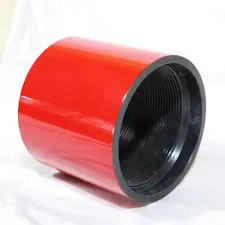- Afrikaans
- Albanian
- Amharic
- Arabic
- Armenian
- Azerbaijani
- Basque
- Belarusian
- Bengali
- Bosnian
- Bulgarian
- Catalan
- Cebuano
- Corsican
- Croatian
- Czech
- Danish
- Dutch
- English
- Esperanto
- Estonian
- Finnish
- French
- Frisian
- Galician
- Georgian
- German
- Greek
- Gujarati
- Haitian Creole
- hausa
- hawaiian
- Hebrew
- Hindi
- Miao
- Hungarian
- Icelandic
- igbo
- Indonesian
- irish
- Italian
- Japanese
- Javanese
- Kannada
- kazakh
- Khmer
- Rwandese
- Korean
- Kurdish
- Kyrgyz
- Lao
- Latin
- Latvian
- Lithuanian
- Luxembourgish
- Macedonian
- Malgashi
- Malay
- Malayalam
- Maltese
- Maori
- Marathi
- Mongolian
- Myanmar
- Nepali
- Norwegian
- Norwegian
- Occitan
- Pashto
- Persian
- Polish
- Portuguese
- Punjabi
- Romanian
- Russian
- Samoan
- Scottish Gaelic
- Serbian
- Sesotho
- Shona
- Sindhi
- Sinhala
- Slovak
- Slovenian
- Somali
- Spanish
- Sundanese
- Swahili
- Swedish
- Tagalog
- Tajik
- Tamil
- Tatar
- Telugu
- Thai
- Turkish
- Turkmen
- Ukrainian
- Urdu
- Uighur
- Uzbek
- Vietnamese
- Welsh
- Bantu
- Yiddish
- Yoruba
- Zulu
Understanding Bull Plug Pipe Fittings and Their Applications in Plumbing Systems
Understanding Bull Plug Pipe Fittings A Comprehensive Guide
Pipe fittings play a crucial role in various industrial applications, ensuring the safe and efficient transportation of fluids and gases through piping systems. Among the array of fittings available, the bull plug is a specialized component that offers unique advantages in certain scenarios. In this article, we will delve into the definition, types, applications, and benefits of bull plug pipe fittings, providing a detailed overview for engineers, technicians, and anyone interested in plumbing and piping systems.
What is a Bull Plug?
A bull plug, often referred to as a blind plug, is a type of pipe fitting designed to seal the end of a pipe. Unlike standard plugs that may be used in more temporary or maintenance situations, bull plugs are typically employed when a more secure and permanent closure is required. This fitting is commonly made from materials such as steel, stainless steel, brass, and PVC, depending on the application and the nature of the fluids or gases being transported.
Different Types of Bull Plugs
Bull plugs come in a variety of shapes and sizes, tailored to meet the specific needs of different piping systems. The most common types include
1. Threaded Bull Plugs These fittings have internal threads that allow them to be screwed into the threaded end of a pipe. Threaded bull plugs provide a tight seal, making them ideal for high-pressure applications.
2. Welded Bull Plugs This type involves welding the plug onto the pipe's end, creating a permanent connection. Welded bull plugs are favored in settings requiring high durability and resistance to mechanical stress.
3. Flanged Bull Plugs Flanged plugs feature a flat surface with holes for bolts, allowing for a secure attachment to a flanged pipe. This type is often used in heavy-duty applications where disassembly might be necessary.
4. Socket Weld Bull Plugs Used primarily in high-pressure and high-temperature environments, these plugs fit into the socket of a pipe and are welded in place.
Applications of Bull Plugs
bull plug pipe fitting

Bull plugs are essential components in various industries due to their ability to provide secure closures in pipe systems. Common applications include
- Oil and Gas Industry Bull plugs are used in pipelines to isolate sections for maintenance or testing purposes. - Water Treatment Facilities They seal off unused ports and help maintain pressure in water distribution systems. - Chemical Processing Bull plugs are employed to prevent leaks and ensure safety in environments handling hazardous materials. - HVAC Systems In heating and cooling systems, bull plugs help to block off pipe ends to improve system efficiency.
Benefits of Using Bull Plugs
1. Durability Made from robust materials, bull plugs can withstand harsh conditions, including extreme temperatures and high-pressure environments.
2. Leak Prevention The tight seals created by bull plugs significantly reduce the risk of leaks, ensuring the safety and integrity of the system.
3. Versatility With various types available, bull plugs can be suited for a wide range of applications, making them highly adaptable in different industries.
4. Cost-Effective By providing a permanent solution to sealing pipes, bull plugs help reduce maintenance costs associated with leaks and system failures.
5. Ease of Installation Depending on the type, bull plugs can be easily installed using common tools, making them accessible for various maintenance teams.
Conclusion
In conclusion, bull plug pipe fittings are an integral component of piping systems across various industries. Their ability to provide secure, durable, and leak-proof closures makes them a preferred choice for engineers and technicians. Understanding the different types of bull plugs and their applications allows professionals to make informed decisions that enhance the safety and efficiency of their piping systems. As industries continue to evolve, the importance of reliable fittings like bull plugs will remain a constant in the pursuit of effective fluid and gas transportation.
-
Tubing Pup Joints: Essential Components for Oil and Gas OperationsNewsJul.10,2025
-
Pup Joints: Essential Components for Reliable Drilling OperationsNewsJul.10,2025
-
Pipe Couplings: Connecting Your World EfficientlyNewsJul.10,2025
-
Mastering Oilfield Operations with Quality Tubing and CasingNewsJul.10,2025
-
High-Quality Casing Couplings for Every NeedNewsJul.10,2025
-
Boost Your Drilling Efficiency with Premium Crossover Tools & Seating NipplesNewsJul.10,2025







